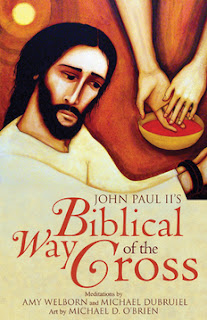The Cross of Christ Unites. . . Those Divided by Sin
For to this you have been called, because Christ also suffered for you, leaving you an example, that you should follow in his steps. He committed no sin; no guile was found on his lips. When he was reviled, he did not revile in return; when he suffered, he did not threaten; but he trusted to him who judges justly. He himself bore our sins in his body on the tree, that we might die to sin and live to righteousness. 1 PETER 2:21–24
Be merciful, even as your Father is merciful. LUKE 6:36
Christ Reunites
At the crucifixion, the people were unified in their will that Christ should die. The Romans, representing the civilized world of that time, put Jesus to death; the Chosen People, represented by their leaders, offered up the Son of God in sacrifice. But from the moment Jesus said to the disciple that he loved, “Behold your mother,” and to his Mother, “Behold your son,” the separation was over. The divisions that had existed since the time of Adam and Eve began to heal. The gospel of Christ was put in motion by the cross, under which every tribe and nation and people would one day be united. On the day of Pentecost, Babel was reversed. The people heard Peter preach, each in his own tongue. From that moment, the Church was sent throughout the whole world, to reconcile it all to Christ.
St. Paul spells out clearly this reconciliation that Christ has brought about when he says, “There is neither Jew nor Greek . . . there is neither male nor female; for you are all one in Christ Jesus” (Galatians 3:28). In Christ the sin of division between people comes to an end.
--an excerpt from
The Power of the Cross by Michael Dubruiel is a book well-suited to daily reading during Lent.


